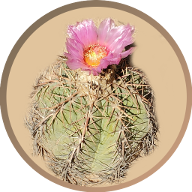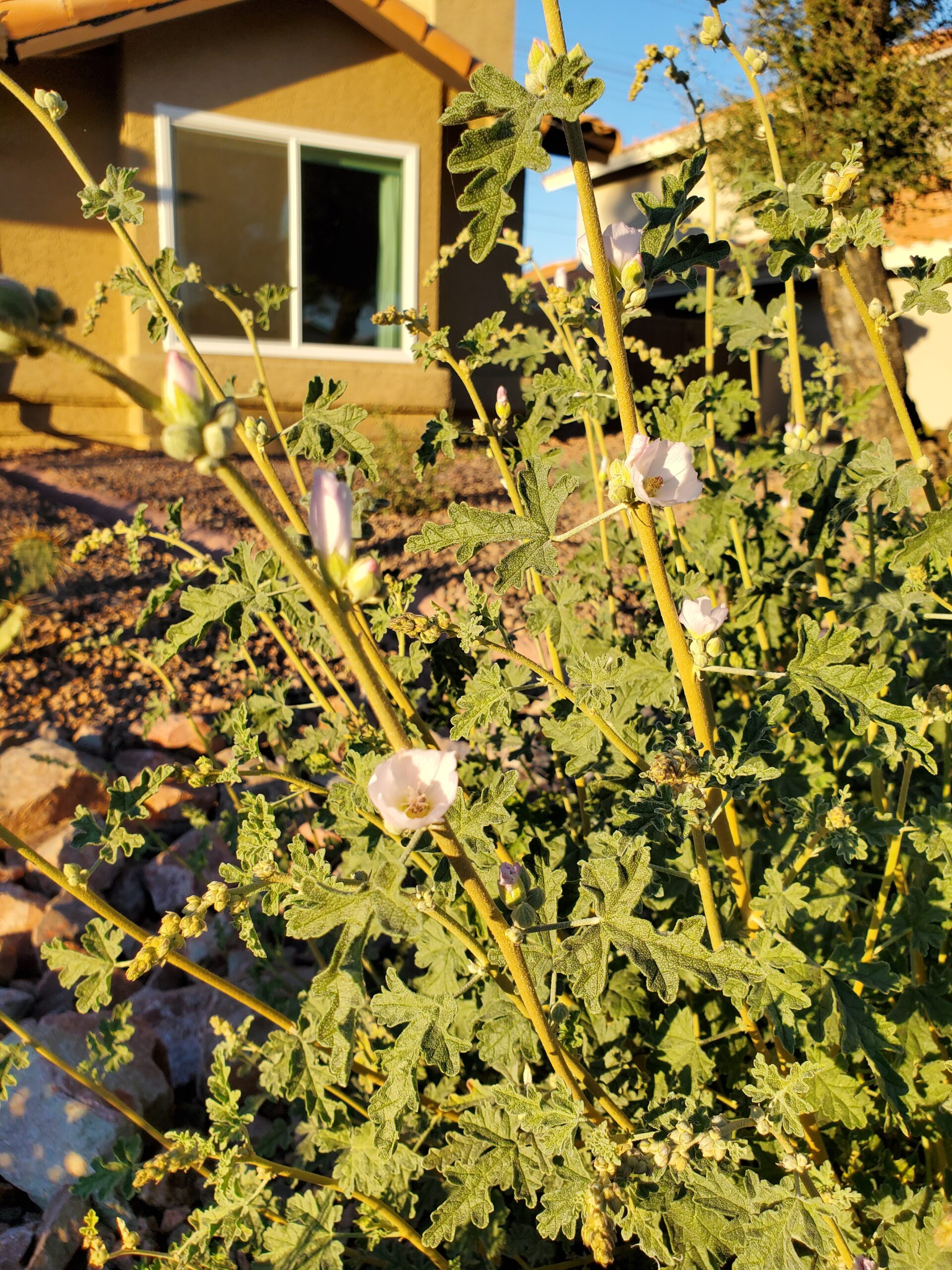 | Globe Mallow (Sphaeralcea ambigua) I don’t know why this beautiful native desert flower is not used more in Arizona gardens. It comes naturally in a variety of colours: orange, red, pink, and white. It can bloom multiple times throughout the year when water is available. |
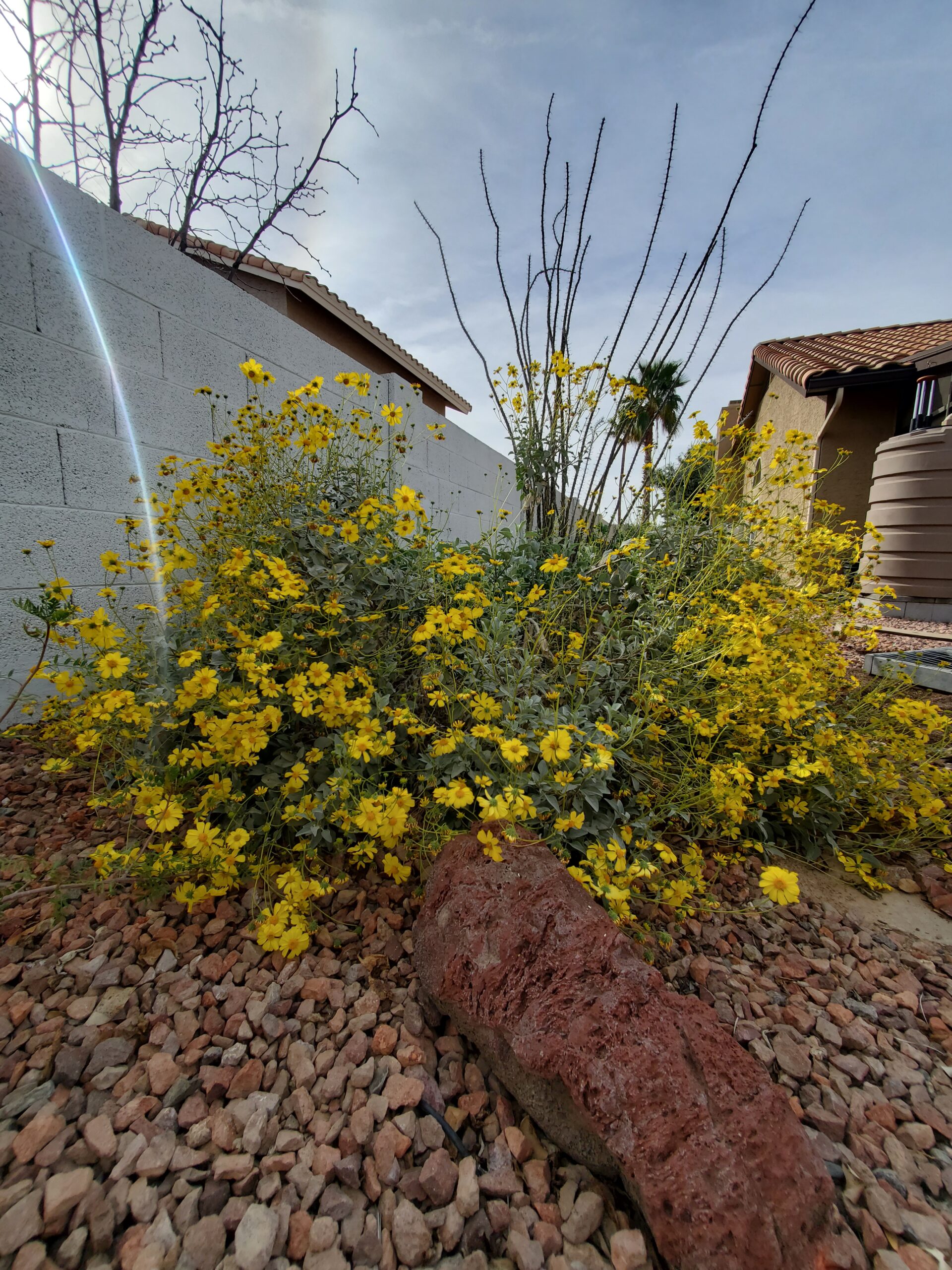 | Brittlebush (Encelia farinosa) The common brittlebush has blue-gray folliage and profuse yellow flowers in the winter and spring. It grows easily in the desert but it is short lived. The branches of this plant are brittle and have an aromatic resin that can be burned like incense. |
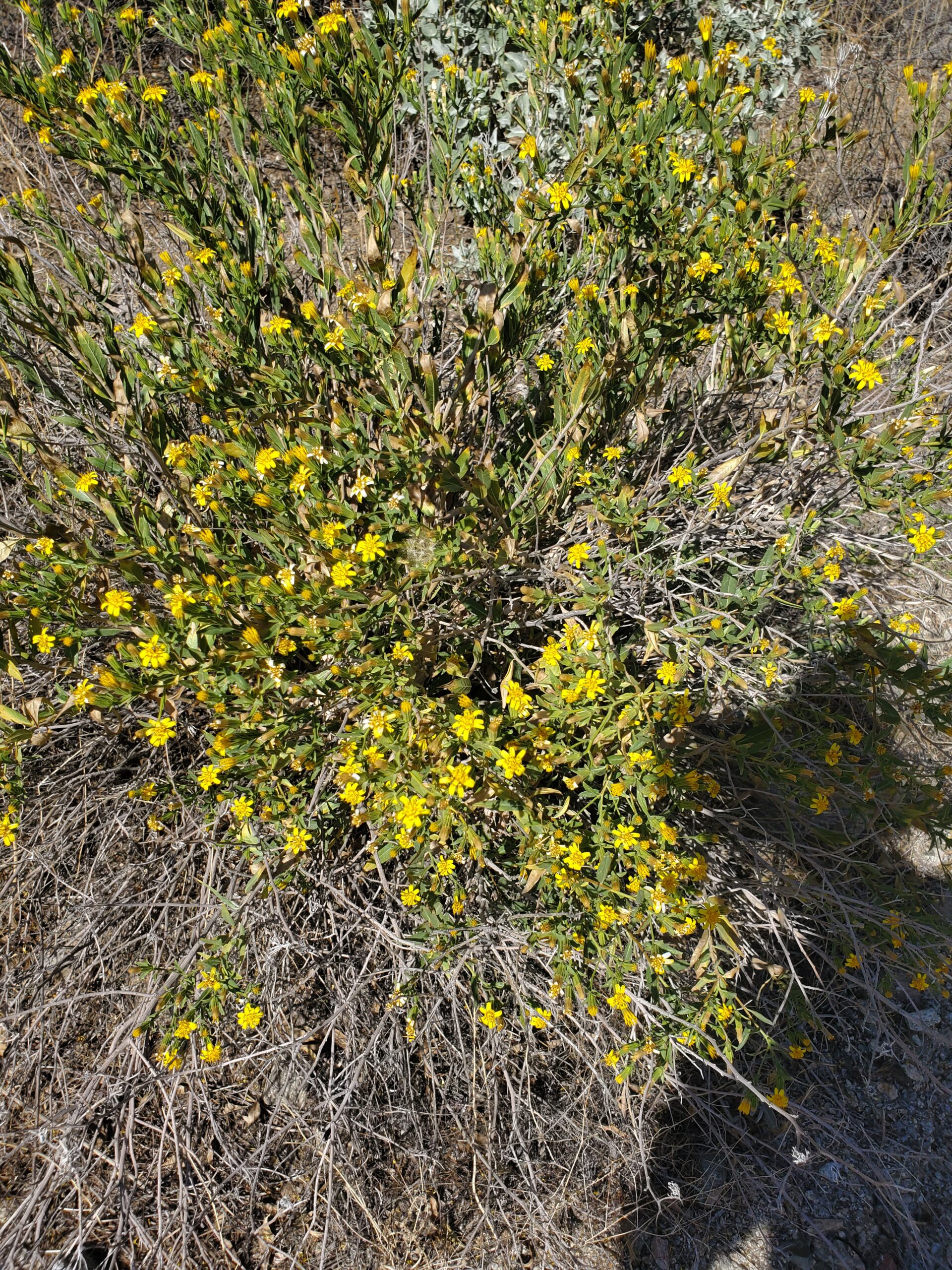 | Trixis (Trixis californica) The trixis usually grows under a tree rather than in the open desert. This one was found in the bottom of a wash on South mountain, under an ironwood tree. |
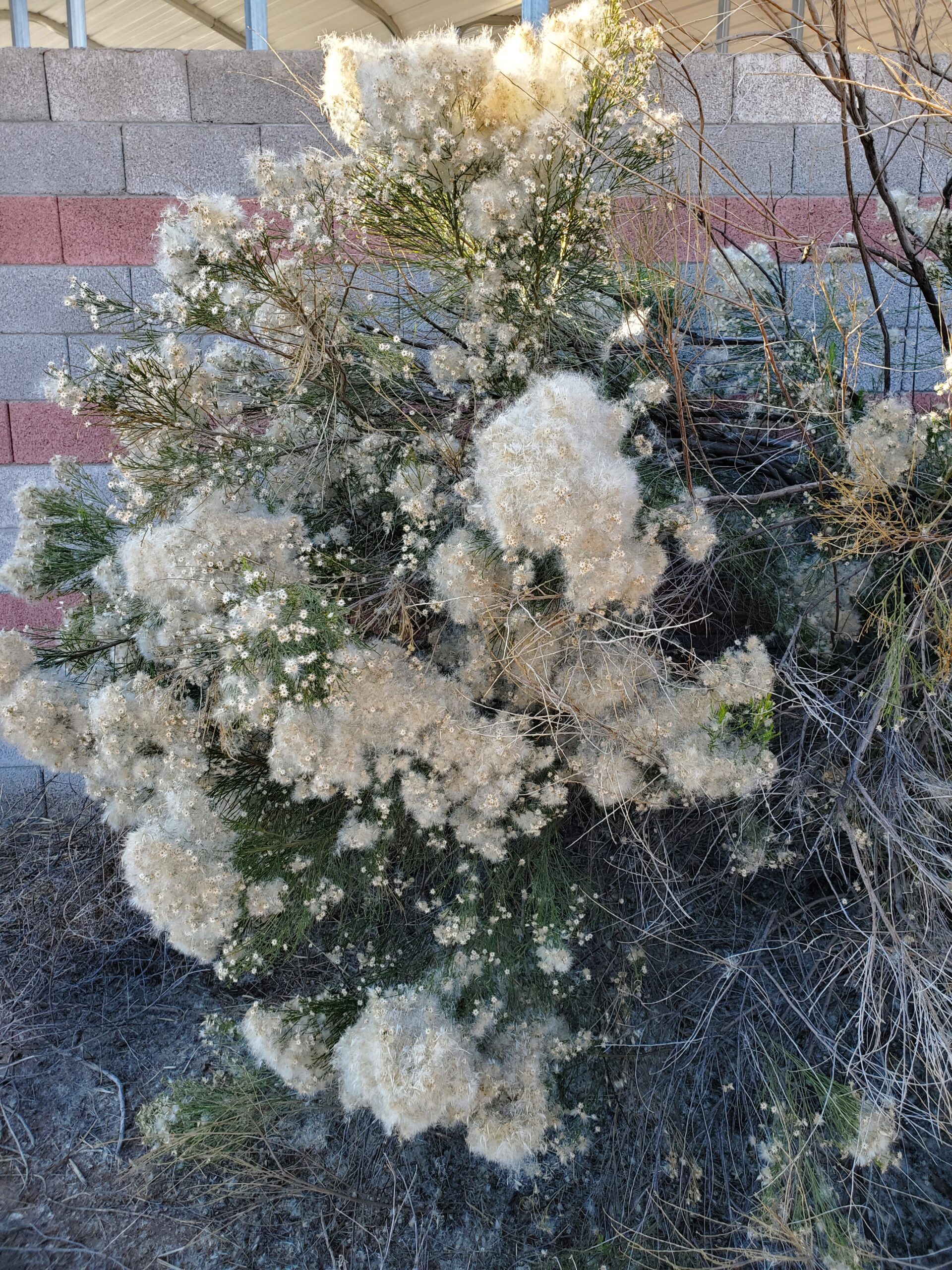 | Desert Broom (Baccharis sarothroides) This beatiful large bush is most often found on disturbed lands, like near railroad tracks, along canals, and on unkempt properties. Some people consider it to be a weed. I like it. I haven’t been able to successfully propagate it yet, but I keep trying. |
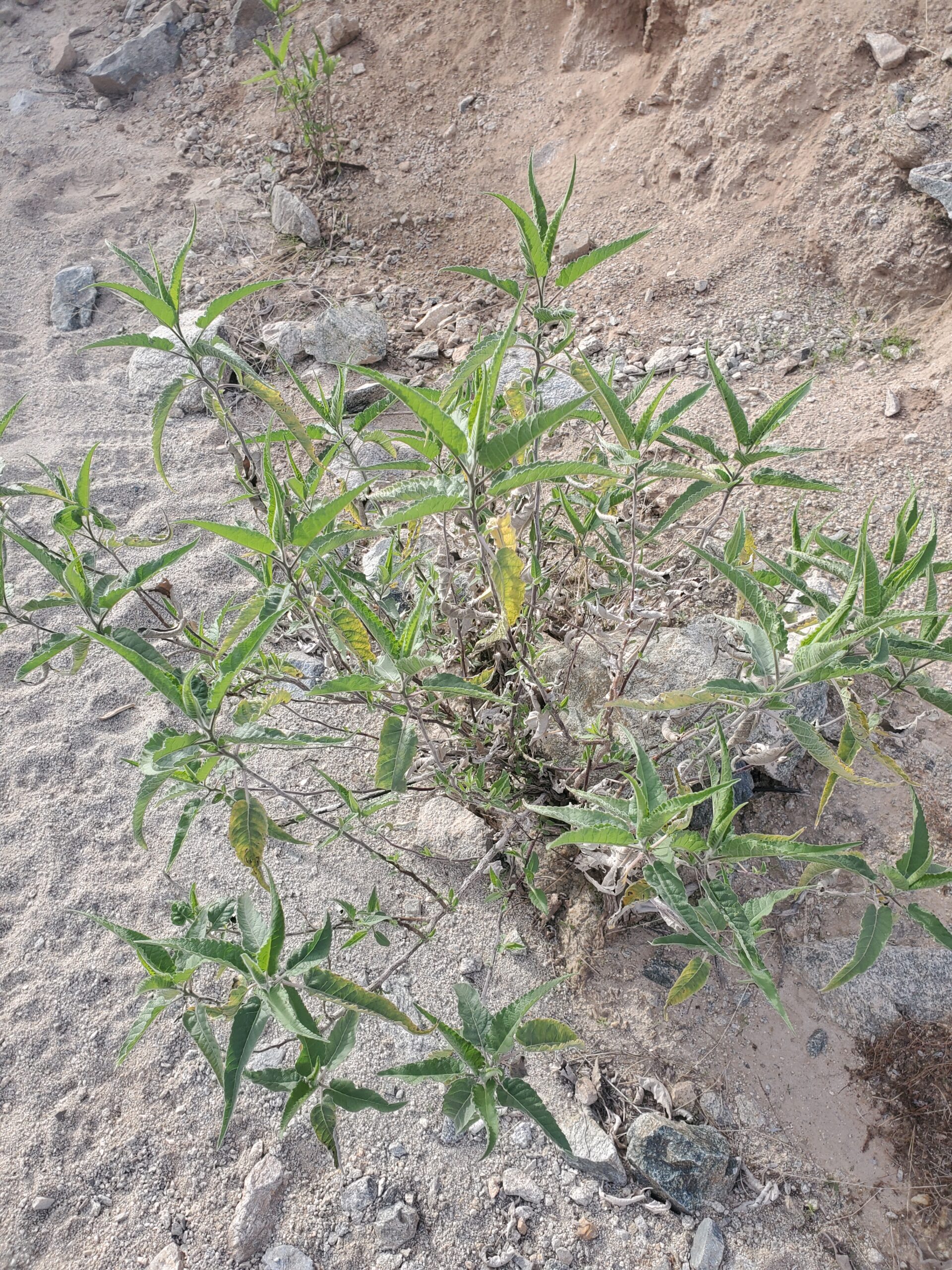 | Canyon Ragweed (Ambrosia ambrosioides) This plant is always found at the bottom of washes in the Arizona deserts. It is easily dinstinguished by its large leaves that are unusual for a desert plant. |
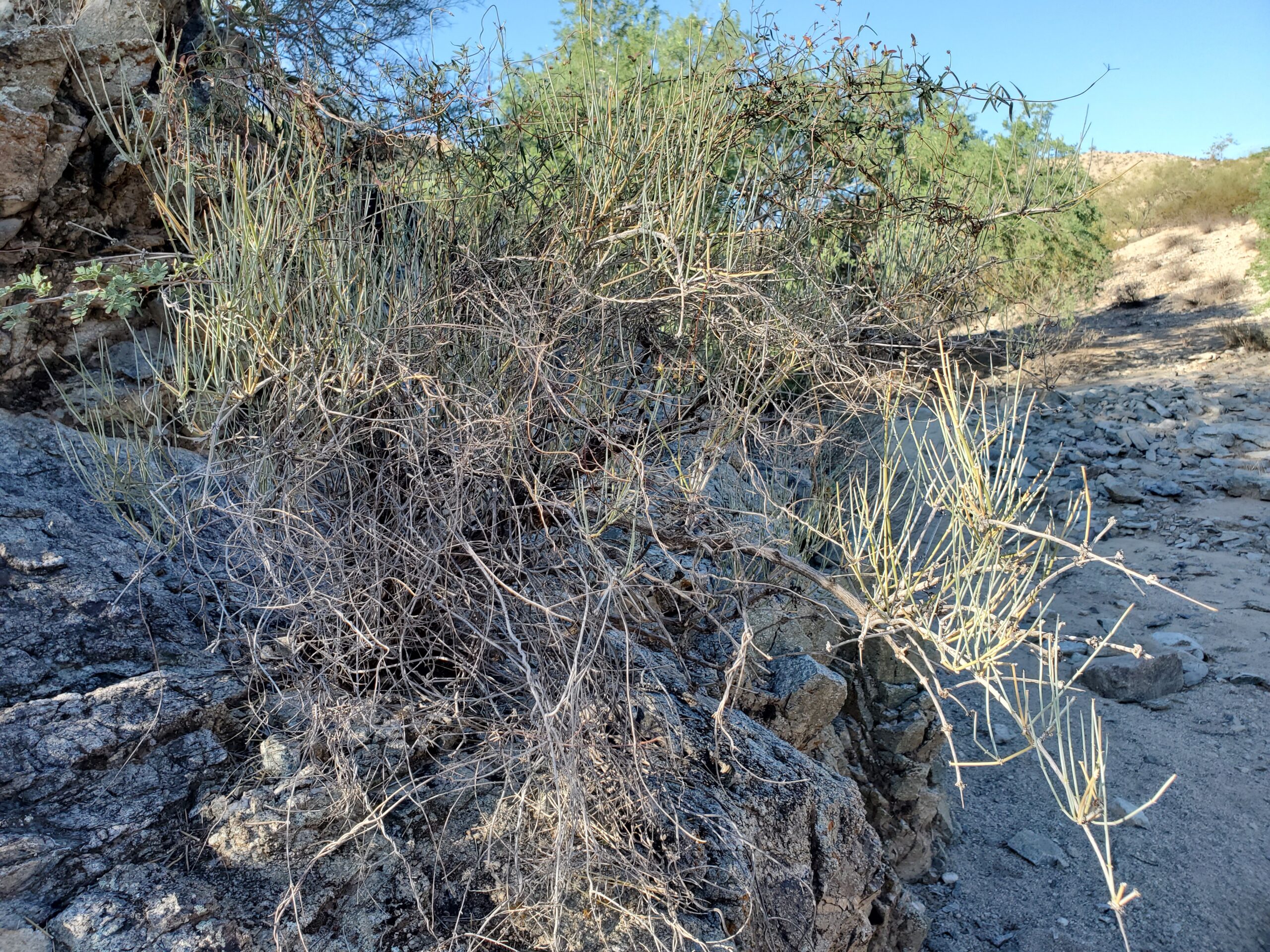 | Mormon’s Tea (Ephedra torreyana) There are many species of Mormon’s Tea/Ephedra. They tend to be characterized by a mass of leafless green shoots. Some people make a tea by boiling the branches. |
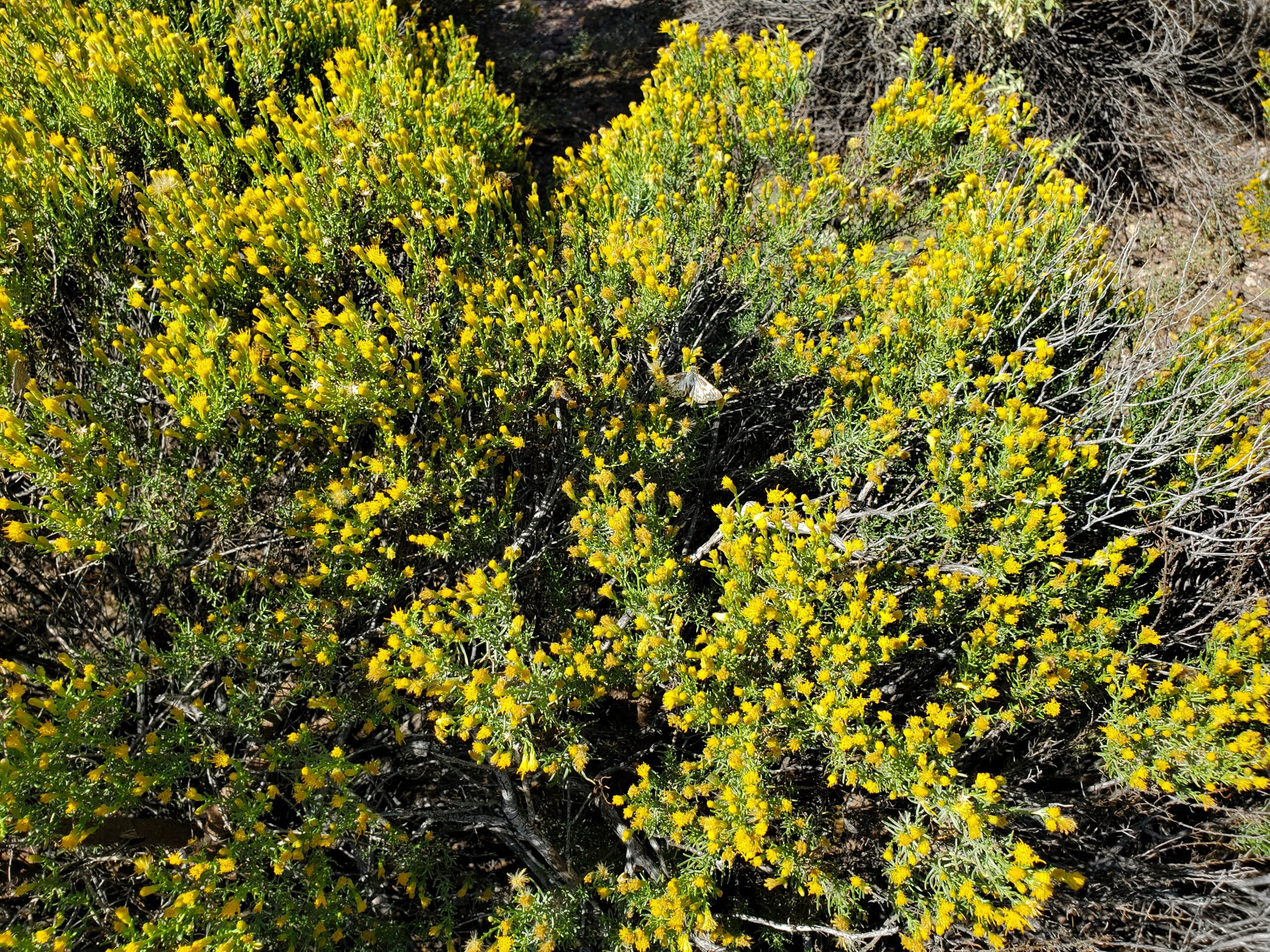 | Turpentine Bush (Ericameria laricifolia) The turpentine bush one of the best for attracting butterflies. I found it growing wild at the Lost Dutchman State park in the foothills of the Superstition Mountains. It was covered in butterflies. It is more common at higher elevations (3000′ to 6000′), so if you plant it in the low desert, give it some extra water and partial shade until it is established. |
